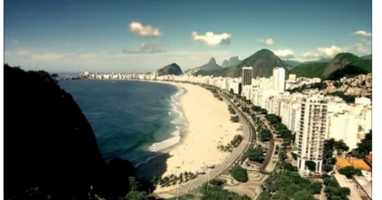A imagem do Rio: de Cidade Maravilhosa a Cidade Olímpica. Análise da construção de representações
Este trabalho trata da construção de representações do Rio de Janeiro, levando- se em conta os possíveis impactos que a perspectiva dos megaeventos que vem ocorrendo na cidade, em especial os Jogos Olímpicos de 2016, podem ter nesse processo. Tem o objetivo de compreender e explicitar os possíveis significados de tais representações. Considerou-se que essa lógica ocorre no contexto das cidades commodities, onde intenciona-se ‘vender' a cidade em um mercado simbólico mundial e assim aquecer o setor de turismo e atrair investimentos. Para tanto, na economia de mercado é necessário desenvolver a marca da cidade, assim como é feito com produtos e empresas, tendo como base as condições e aspectos que são considerados importantes e devem ser ressaltados para fortalecer tal construção simbólica no contexto nacional e internacional. Na realização desse processo são usados ainda aspectos do branding, ou seja, técnicas e estratégias para o gerenciamento da marca, com vistas a promovê-la para que seja compreendida pelo público dentro dos quesitos planejados. Nesse estudo do caso do Rio de Janeiro, no que concerne às possíveis mudanças de percepção promovidas em sua imagem nos últimos anos, e que consequentemente podem afetar sua marca, foram analisados materiais gráficos e de audiovisual de caráter publicitário e turístico, com o objetivo de compreender os discursos sobre a cidade neles apresentados. Alguns deles fazem parte da complexa estruturação da identidade visual dos Jogos do Rio 2016, outros são publicidades de estâncias governamentais, como a Prefeitura e o Governo do Estado, que associam obras urbanas e melhorias nas condições de vida da população ao evento olímpico e divulgam também aspectos importantes para legitimar a realização do mesmo na capital fluminense. Foram analisados ainda publicidades da iniciativa privada que se apropriam de facetas da imagem do Rio de Janeiro e, ainda que não tenham associação direta com as Olimpíadas, acabam por sedimentar também as representações aqui analisadas.
This work is about the construction of representations of Rio de Janeiro, considering the possible impacts of the mega events that have been taking place in the city, specially the 2016 Olympics. It aims to understand and explain the possible meanings of such representations. It was taken into account that this logic exists in the context of commodity cities, in which the goal is to “sell” the city on a fictional world market and, therefore, increase tourism and attracts new investments. For doing so in a market economy it’s necessary to develop the city’s brand, as is done for products and companies, based on the conditions and aspects that are considered important and that must be highlighted in order to strengthen said construction in the national and international contexts. Throughout this process branding aspects were also used, i.e., techniques and strategies for the management of the brand, aiming to promote it so that it is understood by the public. In this study of the Rio de Janeiro case, in what concerns the possible changes of the perception of its image in the past few years, which can, as consequence, affect its brand, were analyzed the graphic and audio-visual materials used for advertisements and tourism, with the goal of understanding the views of the city that are presented by them. Some of them are part of the complex structure of the 2016 Olympic games’ visual identity; others are part of campaigns made by government offices, such as the Mayor’s Office and the State Governor’s Office, which link urban constructions and improvements in the population’s life quality to the Olympics and also publicize important aspects in order to justify doing the event in the city. Were also analyzed advertisements made by private initiatives that used Rio de Janeiro’s image, but that were not directly involved with the 2016 Olympics.
